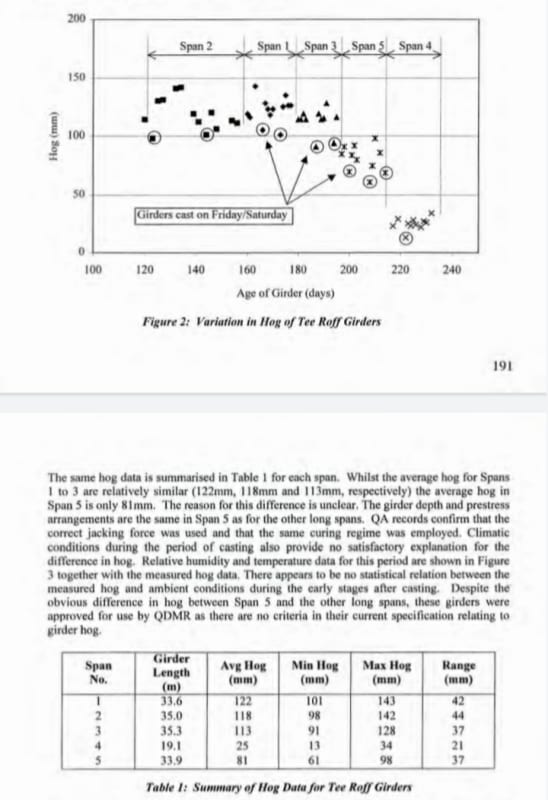The bridge owner doesn't want any downward camber in the long term (i.e. no tension in the PS beam bottom flange over time).
PCI has a procedure for estimating long term camber from creep and shrinkage using multipliers, but states that these multipliers are not applicable to bridges with composite cast in place decks, as it serves to limits the effect of creep/shrinkage the beam, nor should the designer include additional camber for long term effects when the multipliers are used.
My question is, what is the typical practice for considering long term camber in PS bridge beam with composite decks? if it is considered, what is the typical procedure used to calculate/estimate it?
PCI has a procedure for estimating long term camber from creep and shrinkage using multipliers, but states that these multipliers are not applicable to bridges with composite cast in place decks, as it serves to limits the effect of creep/shrinkage the beam, nor should the designer include additional camber for long term effects when the multipliers are used.
My question is, what is the typical practice for considering long term camber in PS bridge beam with composite decks? if it is considered, what is the typical procedure used to calculate/estimate it?

